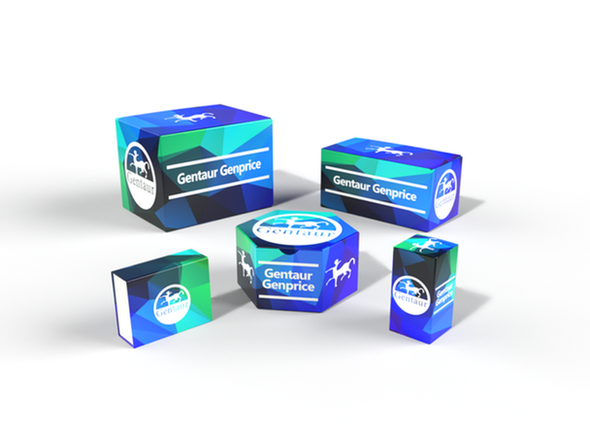740
Mouse Tumor necrosis factor ligand superfamily member 14 (TNFSF14) ELISA Kit | AE13978MO
- SKU:
- 740-AE13978MO
- Availability:
- Usually ships in 5 working days
Description
Mouse Tumor necrosis factor ligand superfamily member 14 (TNFSF14) ELISA Kit | AE13978MO | Gentaur UK, US & Europe Distribution
Species Reactivity: Mouse (Mus musculus)
Abbreviation: TNFSF14
Alternative Name: CD258; HVEML; LIGHT; LTg; TR2; delta transmembrane LIGHT|herpesvirus entry mediator A|ligand for herpesvirus entry mediator|tumor necrosis factor ligand superfamily; member 14|tumor necrosis factor
Application: ELISA
Range: 78.12-5000 pg/mL
Sensitivity: 34 pg/mL
Intra-Assay: ≤5.2%
Inter-Assay: ≤7.4%
Recovery: 1, 01
Sample Type: Serum, Plasma, Other biological fluids
Detection Method: Sandwich
Analysis Method : Quantitive
Test Principale: This assay employs a two-site sandwich ELISA to quantitate TNFSF14 in samples. An antibody specific for TNFSF14 has been pre-coated onto a microplate. Standards and samples are pipetted into the wells and anyTNFSF14 present is bound by the immobilized antibody. After removing any unbound substances, a biotin-conjugated antibody specific for TNFSF14 is added to the wells. After washing, Streptavidin conjugated Horseradish Peroxidase (HRP) is added to the wells. Following a wash to remove any unbound avidin-enzyme reagent, a substrate solution is added to the wells and color develops in proportion to the amount of TNFSF14 bound in the initial step. The color development is stopped and the intensity of the color is measured.
Product Overview: Tumor necrosis factor ligand superfamily member 14 is a protein encoded by this gene is a member of the tumor necrosis factor (TNF) ligand family. This protein is a ligand for TNFRSF14, which is a member of the tumor necrosis factor receptor superfamily, and which is also known as a herpesvirus entry mediator (HVEM) . This protein may function as a costimulatory factor for the activation of lymphoid cells and as a deterrent to infection by herpesvirus. This protein has been shown to stimulate the proliferation of T cells, and trigger apoptosis of various tumor cells. This protein is also reported to prevent tumor necrosis factor alpha mediated apoptosis in primary hepatocyte. Two alternatively spliced transcript variant encoding distinct isoforms have been reported.
Stability: The stability of ELISA kit is determined by the loss rate of activity. The loss rate of this kit is less than 5% within the expiration date under appropriate storage condition. The loss rate was determined by accelerated thermal degradation test. Keep the kit at 37°C for 4 and 7 days, and compare O.D.values of the kit kept at 37°C with that of at recommended temperature. (referring from China Biological Products Standard, which was calculated by the Arrhenius equation. For ELISA kit, 4 days storage at 37°C can be considered as 6 months at 2 - 8°C, which means 7 days at 37°C equaling 12 months at 2 - 8°C) .










